Meet Members and Patrons
Q&A with Chengxi
Please tell us about yourself...
I’m Chengxi, founder and CEO of a London-based 3D printer brand, Satori. After graduating from Oxford University, I stepped into 3D printing industry, first managing a marketplace for 3D printable content and now moving to 3D printer innovation. My journey in 3D printing industry started from the people: the community of designers, creatives and innovators who are actively using 3D printers for fun or professional needs. By talking to designers on daily basis, I recognised a new need in 3D printing, between hobby and existing industrial machines. On the one hand, hobby 3D printers are a great introduction into 3D printing, but they are not reliable enough for large prints or long operational hours. On the other hand, industrial machines, based on old patents, are expensive, typically above £10,000. By founding Satori, my vision is to make high-quality 3D printing more user-friendly and affordable, thus empowering designers and innovators with more possibilities of creativity. So far, my company has partnered with designers from a wide range of industries to push forward the application of 3D printing in architecture, art, animation, jewellery, engineering, social impact and dentistry. If you are interested in exploring how innovation in 3D printing can open new possibilities of your creative work, don’t hesitate to get connected via Linkedin or Twitter. I’m looking forward to exploring adventure with you.

Chengxi
You visited Sneakers Unboxed lately, did you like the exhibition?
I like how the exhibition of Sneakers Unboxed connects a consumer product with the identity of the wearers and unfolds the zeitgeist from the view of product design. However, something I’d like to see more is the critical reflection on where we are going in terms of the interaction between technology and human beings. For example, the display below is the knitting robot producing Adidas Future. Besides integrating robotics, in recent years, we also heard about application of 3D printing in making sneakers more customisable and high performing. As traditional sneaker making process starts to be replaced by multidisciplinary technology, what role do we humans play in the innovation process? Sneakers themselves are more than functional consumer products; they are story tellers that carry our identities and mark the spirit of the time – in some way, they are wearable art. As with many other art forms, we can upgrade the tools we use, but something particular about humans should remain at the core of the creation process. How do we evolve our creativity with the aid of powerful technology? Sneakers’ evolvement history may provoke an answer.
A dream Design Museum exhibition you'd love to see?
An exhibition of toys in the past one century and ideally in different cultures. Toys are more than a phase of childhood; they are an illustration of our inner desires, dreams and identities, visualised in tangible form. As we grow up, we don’t outgrow toys. We keep “toys” in our heart, whether it’s the desire for superpower hidden in transformers or the beautiful confidence waving through different roles played by barbies. The design of toy is the design of our dream. By embracing the toys again, we reconnect with who we are and what we want to become. We are toys; toys are us.
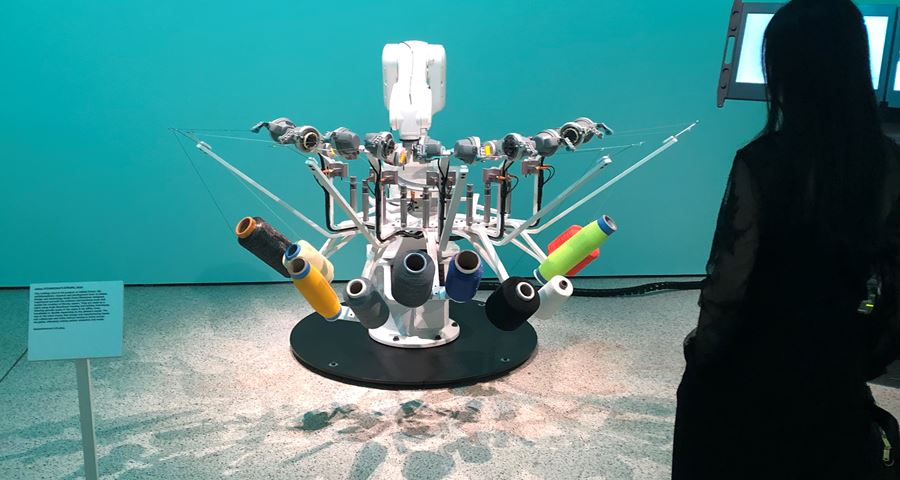
Chengxi visiting Sneakers Unboxeed: Studio to Street
How did your interest in design start?
I’ve been close to the creative industry since a young age. I used to be trained to be a professional singer for over 10 years and once ranked in 2nd at national singing competition in China. But when it came to college, I decided to explore further beyond the known area of music and started to get interested about technology. For me, music is beyond an industry, but a way of thinking: the ultimate “performance”, whether it’s in the form of a song or a tech product, is the one that can connect with people’s identity and encourage them to be authentically who they are. This is true for my 3D printer design. I led the team to design 3D printer in a way that the technology will not dwarf you as a user, but empower you with a smoother user experience and strong technical solution. My 3D printer brand is called Satori, which means “enlightenment” in Japansese Zen. It’s an illustration of my design philosophy in tech product: the technology is waved smoothly into who you are and helps you achieve this aha moment in the creative journey.
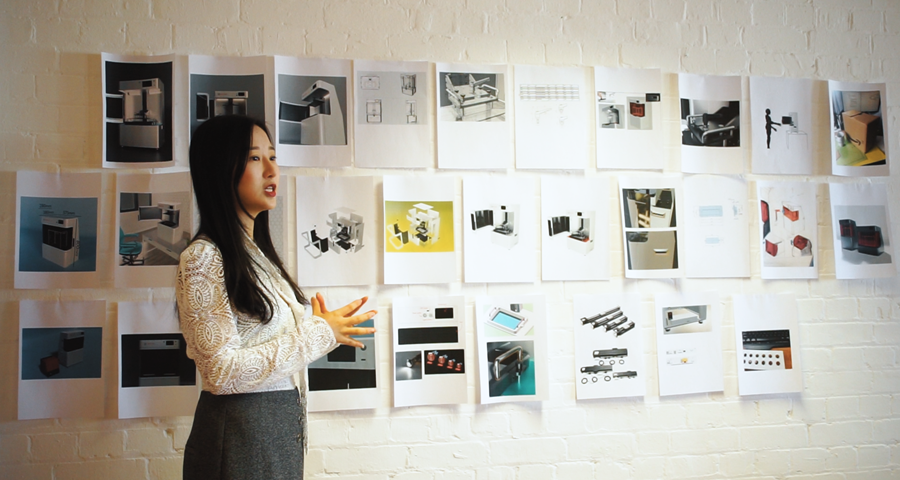
Chengxi and design process of Satori 3D printer
How did you develop a passion in 3D Printing and start your business?
After graduating from Oxford University, I was hired as the new CEO of a global marketplace for 3D printable content. It was like Amazon in the digital world: instead of trading physical products, people sell or buy digital files to be 3D printed at home. It was a big international community of 3D designers and makers who are dedicated to push forward their creativity. However, 3D printing is beyond just content; it’s an ecosystem of design, software, 3D printer and end application. I quickly recognised the bottleneck of current 3D printing industry. Beyond great content, we need innovation in 3D printer to bring those great designs into reality. In the current market, there are two categories of 3D printers: hobby (cheap but not durable for serious work) and industrial (reliable but expensive, not affordable by individuals or small businesses). With this realisation, I decided to solve the pain point by bringing Satori to the market, to make high quality 3D printing more affordable and user-friendly.

Satori core team
What are your three all-time favourite 3D Printing designs?
1. Prosthetic leg, designed in collaboration with Mahdi Naim Design Lab (https://mahdi-naim.com/) and 3D printed out by Satori, as an initiative to democratise access to medical device in Africa

Prosthetic Leg
What are your three all-time favourite 3D Printing designs?
2. Robotic hand: 3D printed by Satori with engineering grade resin. The fingers are articulate and flexible, while the material is tough enough to perform enduring functionality.

Robotic hand printed by Satori
What are your three all-time favourite 3D Printing designs?
3. Crystal necklace: designed in collaboration with fashion designer Ganit Goldstein. The necklace was 3D printed out by Satori within 7 hours and have crystal finish. This pushes forward the possibility of 3D printing to produce not just prototype but beautiful end products.
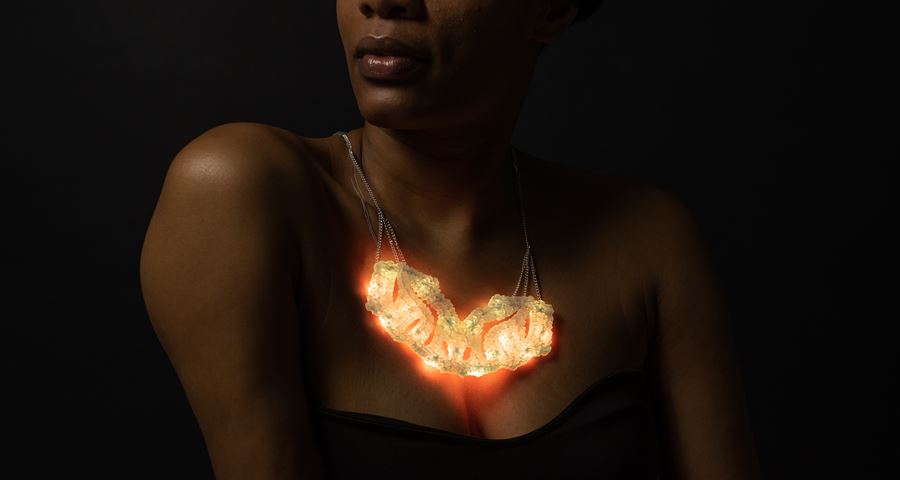
Crystal necklace with WIFI controlled light to change colour, printed and made by Satori
What are the unexplored potentials of 3D Printing?
The potential of 3D printing technology itself has been a familiar story: in the past one year, we heard about 3D printing home, medical device... However, in my opinion, the true potential of 3D printing is not just about the technology itself, but how users can interact with 3D printer more smoothly and push forward the creativity of human beings. Different from other tech products that present a solution on its own, 3D printing is just a means to an end. What is the end? The end is in our brain, our ideas and creativity. In today’s consumerist culture, we are quite used to consuming technology and outsourcing tasks to tech devices. But there’s something that we can’t outsource, but only to be empowered: our creative designs. Whether we are professional designers or not, it’s important to rejuvenate our ability to think, design and create things, empowered by the tool of 3D printing. The unexplored potential does not reside in 3D printing, but in our head and heart to challenge the status quo and dare to imagine.

Laptop stand, from Satori x Mahdi Work from Home Collection
Your favourite design fields?
As a tech entrepreneur, design for me is beyond just a speciality, but a way of thinking. I’m very interested in applying design thinking to resolve problems involved in product innovation and customer journey. Besides, I enjoy interdisciplinary creativity. Looking forward to bringing 3D printing technology to disrupt and transform other industries, whether it’s art, engineering, medical or architecture. (below 3D printed models all printed out with Satori 3D printer and materials)
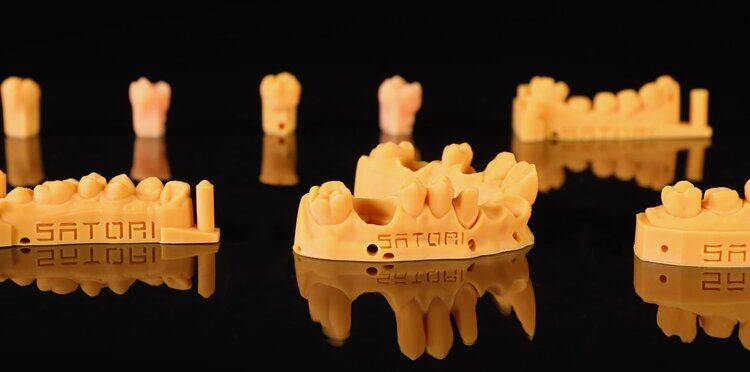
Teeth models

Bike helmet prototype
What current exhibitions from other organisations would you recommend right now?
JR: Chronicles from Saatchi Gallery. It presents the French artist JR’s iconic projects in the past 15 years. JR’s large-scale architectural interventions is an interesting illustration of how one can recreate our relationship with the physical and social structures, and how design can involve community to drive a bigger social change. In my opinion, a good design is the one that goes beyond pure aesthetics, but shines with the strength of transformation. In JR’s word, “use art to turn the world inside out.”
If you could bring only one outfit in a suitcase what would it be?
Probably a black sweater and oversized pants, but definitely a pair of high heels. I like to wear high heels wherever I go, even when it is hours of walking. For me, high heels are more than a part of outfit, but an attitude. Walking with delicate steps and fears of falling down, one learns how to dance with challenges and move beyond fears.
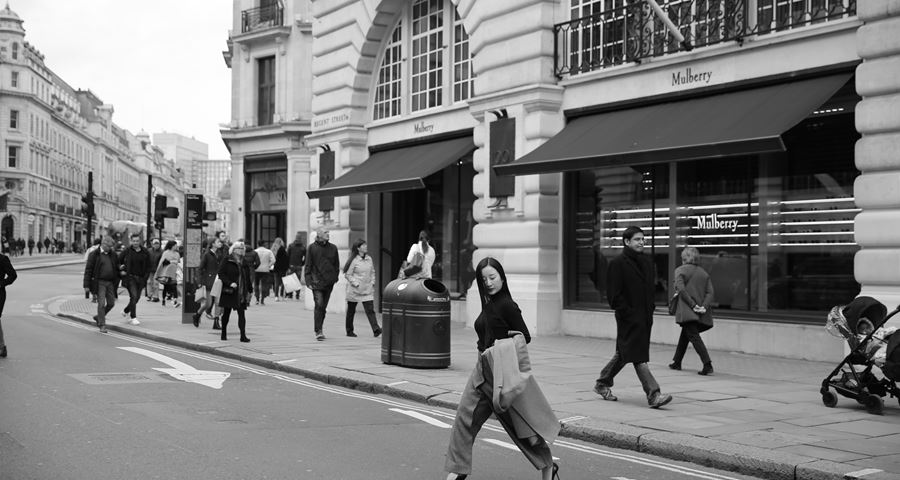
Outfit to pack by Chengxi
What are you watching on tv?
Recently I’ve been rewatching Anthony Bourdain: Parts Unknown. In a lockdown time, it’s good to “travel” again in a journey of appreciation for the beauty of humanity and culture.
What are you listening to at the moment?
Explore my playlist below!
Your favourite food and recipes? Are you good at cooking?
I like seafood as part of my love for the sea, which symbolises freedom, profound mystery and connection to the origin of life. Thus when cooking the seafood, I see it not only as a culinary experience, but a philosophical reflection in the form of an edible design. For example, I put the scallops, fried with garlic and garnished with saffron, with Fornasetti’s gaze of Lina Cavalieri, who was an opera singer and once called as the “most beautiful woman in the world”. The juxtaposition between a primal creature under the sea and a reputable figure on the land provokes the question: is fame as ephemeral as the food on the plate?
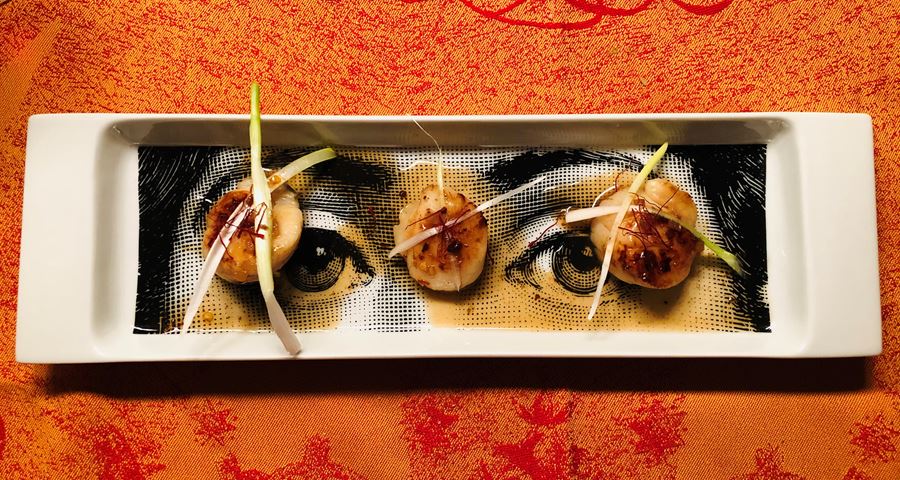
Chengxi's favourite dish
Favourite place where to travel?
In each of our hearts, there probably is such a place: it’s vigorous but also tranquilizing. For me, it is Cascais, a small fishing town near Lisbon. The ferocious beauty of seawater striking the rocky walls brings up restless desires from the deep of your body. But at the same time, the simple lifestyle there quiets your soul down. Nothing seems to matter, yet everything carries a brutalist, beautiful weight.
Introduce yourself
Get in touch with Membership
Introduce yourself to other members, inspire and get inspired!
Everyone can be featured.
Please note the Q&A will be featured in a Members' Area of the website as a members' exclusive content.